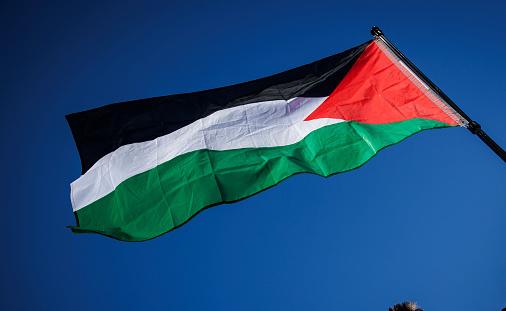Israel and Hamas have agreed to a three-phase ceasefire in Gaza, potentially bringing to an end Israel’s brutal fifteen-month attack on the occupied territory.
But the signing of the deal hit a last-minute snag after Israel pushed back a cabinet vote on the agreement to Friday.
The health ministry in Gaza says Israel has ‘escalated’ its offensive, killing over 80 Palestinians and injuring 200, since the ceasefire announcement on Wednesday by Qatari Prime Minister Mohammed bin Abdulrahman bin Jassim Al Thani.
The deal should signal the end of the 15-month war that has seen Israel kill over 46,000 Palestinians and decimate nearly 60% of the buildings in the occupied enclave.
The ceasefire is still expected to go into effect on Sunday.
Qatar and Egypt helped negotiate the agreement with Israel, while the incoming US administration of President-elect Donald Trump applied pressure on the Israelis, according to Haaretz.
Trump was quick to take credit for the deal, posting on his TruthSocial platform: “This EPIC ceasefire agreement could have only happened as a result of our Historic Victory in November, as it signaled to the entire World that my Administration would seek Peace and negotiate deals to ensure the safety of all Americans.”
President Joe Biden also tried to take credit, even though he allowed Israel to do everything it wanted for the past 15 months. Biden confirmed the multi-phase agreement from the White House.
The initial six-week phase includes a “full and complete ceasefire, the withdrawal of Israeli forces from all the populated areas of Gaza, and the release of a number of hostages held by Hamas, including women, the elderly and the wounded,” he said.
“In exchange, Israel will release hundreds of Palestinian prisoners.”
Hamas’ acting chief Khalil al-Hayya said Israel failed to achieve its objectives, suggesting the prolonged assault had become politically unsustainable. Israeli President Herzog endorsed the agreement in a televised address as the ‘right move’ to secure the captives’ return.
Meanwhile, UN Secretary-General Guterres hoped the deal would ease humanitarian aid delivery into Gaza, pledging increased UN relief efforts.
The deal
The ceasefire deal establishes a six-week pause, during which Israeli occupation forces will gradually withdraw from northern Gaza.
Hamas and other armed groups will release 33 captives, including several men over age 50, while Israel will free 1,000 Palestinians who have been detained since October 8, 2023.
As part of the first phase, Israel will move eastwards from densely populated areas, including the Netzarim Corridor and Kuwait roundabout.
The deal allows displaced Palestinians to return to northern Gaza, which has been decimated by Israel’s brutal aggression.
The Rafah crossing between Gaza and Egypt – which Israel seized – will reopen for wounded civilians after the release of all women captives, though Israeli forces will maintain a presence at the crossing.
Israeli officials said that negotiations for a second phase will begin 16 days after the first phase is implemented.
Israel has killed 46,000 Palestinian lives since October 8, with children representing nearly half of the casualties.
A recent peer-reviewed study in The Lancet suggests these figures may understate the toll by 41%, citing limitations in rescue operations and hospital capabilities.
The UN has called Israel’s actions in Gaza ‘acts of genocide,’ a position endorsed by many countries, academic institutions and historians.





